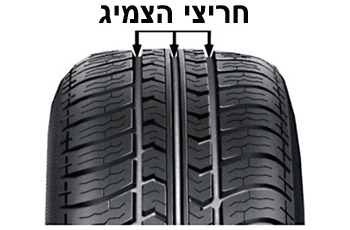Question:1
When we want to verify that the vehicle’s tire air pressure is correct:
Category : Know Your Vehicle
Question:2
Which of the vehicle’s systems might cause an uneven wear of the front tires?
Category : Know Your Vehicle
Question:3
What is the significance of the head rests on the vehicle’s seats during an accident from behind?
Category : Know Your Vehicle
Question:4
What is the consequence of tyre pressure that is too low?
Category : Know Your Vehicle
Question:5
What are you required to do after changing a wheel?
Category : Know Your Vehicle
Question:6
What is the required air pressure of the vehicle’s tires?
Category : Know Your Vehicle
Question:7
The one of the functions of the grooves in the tyre tread

Category : Know Your Vehicle
Question:8
When the hand (parking) brake light on the dashboard is turned on while driving:
Category : Know Your Vehicle
Question:9
What will be the result of moderate driving, without performing heavy engine accelerations?
Category : Know Your Vehicle
Question:10
What are the side effects of using malfunctioning windshield wipers?
Category : Know Your Vehicle
Question:11
What is “wheel locking”?
Category : Know Your Vehicle
Question:12
What are the risks of driving a vehicle with a leaking engine exhaust system?
Category : Know Your Vehicle
Question:13
Why is it necessary to use the handbrake for parking only?
Category : Know Your Vehicle
Question:14
What are you required to do when the engine temperature lamp indicates engine overheating?
Category : Know Your Vehicle
Question:15
What should you carefully check while purchasing a used tire for your vehicle?
Category : Know Your Vehicle
Question:16
What would you do to achieve safe driving down a continuous steep slope?
Category : Know Your Vehicle
Question:17
What is “preventive maintenance” of a vehicle?
Category : Know Your Vehicle
Question:18
What factor might undermine seat belt functioning and efficiency whilst driving?
Category : Know Your Vehicle
Question:19
How does the vehicle’s Electronic Stability Program (ESP) System function during dangerous driving conditions?
Category : Know Your Vehicle
Question:20
To disconnect the engine from the wheels, you should:
Category : Know Your Vehicle
Question:21
What is the proper way of checking engine oil level?
Category : Know Your Vehicle
Question:22
You may reduce your vehicle’s fuel consumption by:
Category : Know Your Vehicle
Question:23
Does the vehicle’s engine have an effect on safe driving?
Category : Know Your Vehicle
Question:24
Why is it prohibited to install stiff and protruding accessories inside the passenger compartment?
Category : Know Your Vehicle
Question:25
What is the function of the ABS system?
Category : Know Your Vehicle
Question:26
What is the function of the vehicle’s auxiliary (parking/hand) brake?
Category : Know Your Vehicle
Question:27
What should you check when purchasing a new tire for your vehicle?
Category : Know Your Vehicle
Question:28
What might happen to a vehicle when its wheels get locked?
Category : Know Your Vehicle
Question:29
What is the required air pressure of the vehicle’s spare tire?
Category : Know Your Vehicle
Question:30
What is a vehicle GPS navigation system?
Category : Know Your Vehicle

